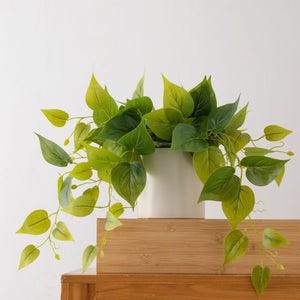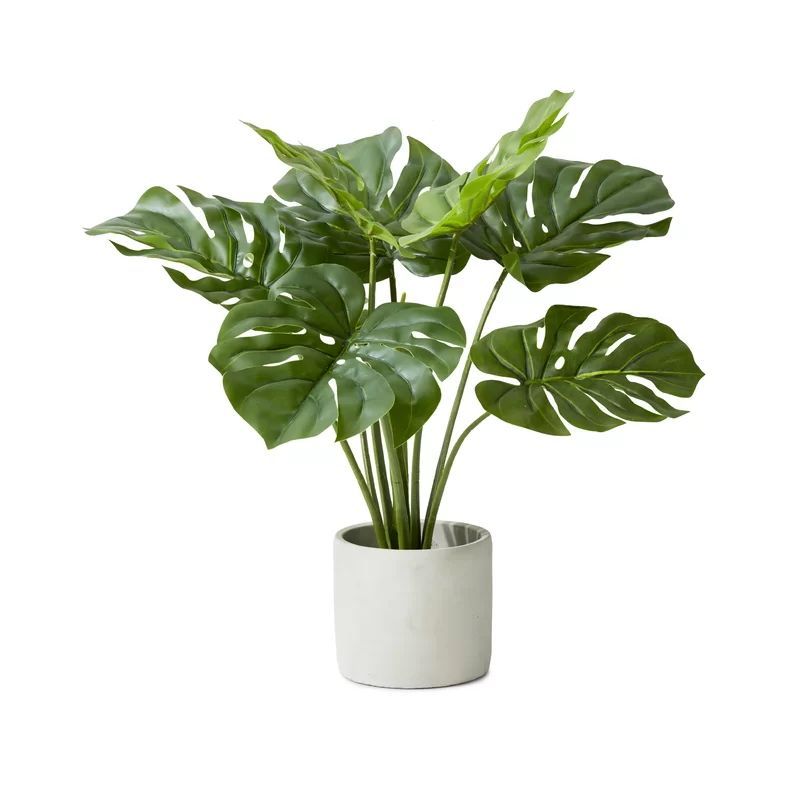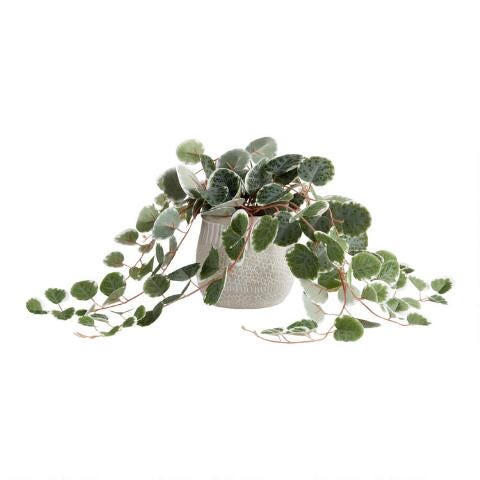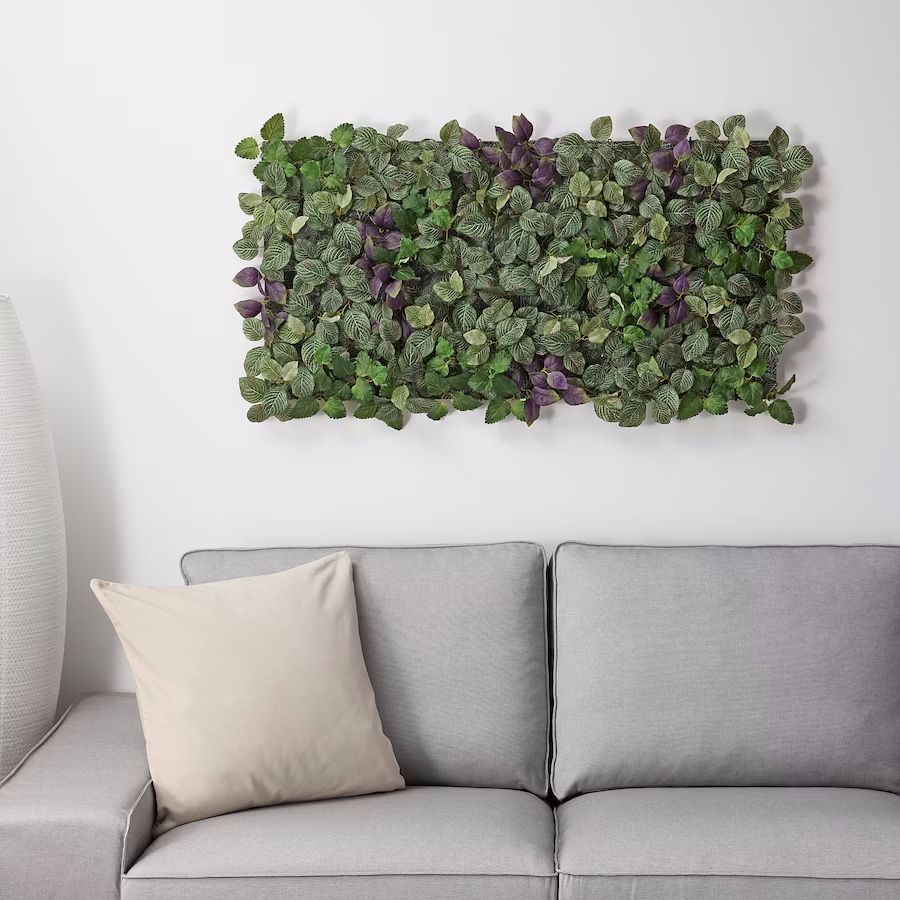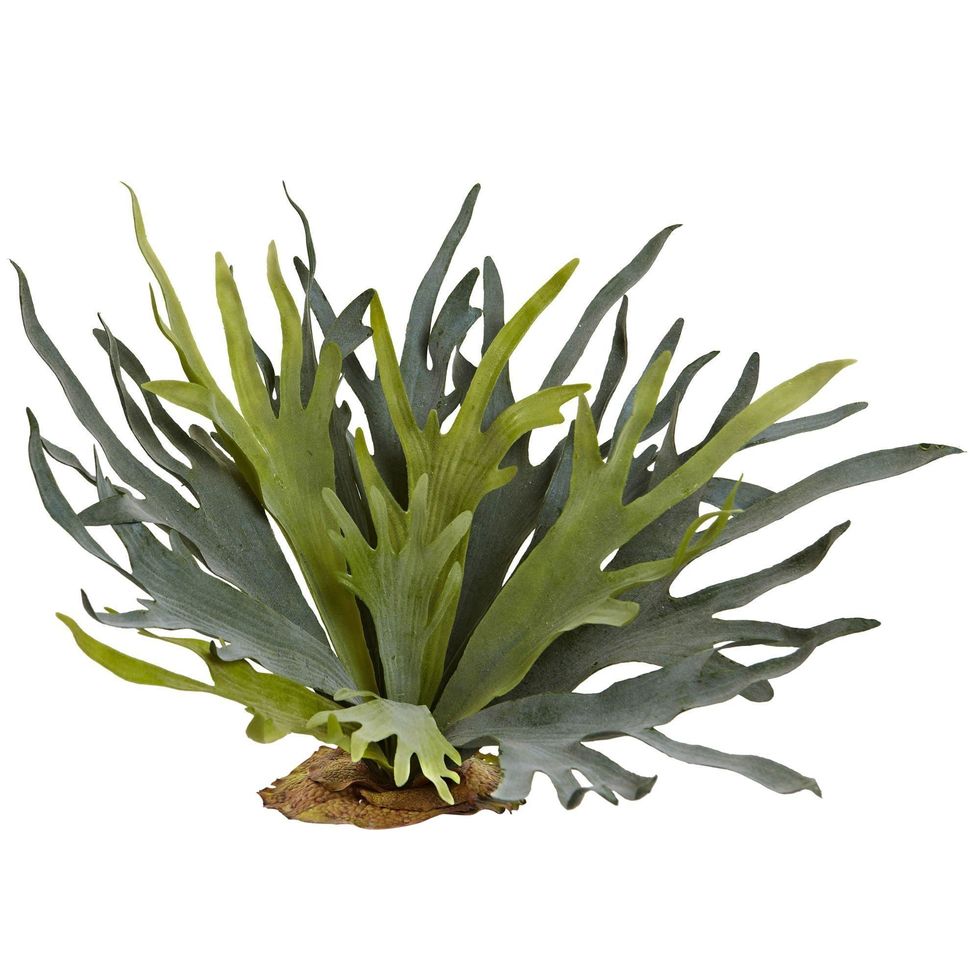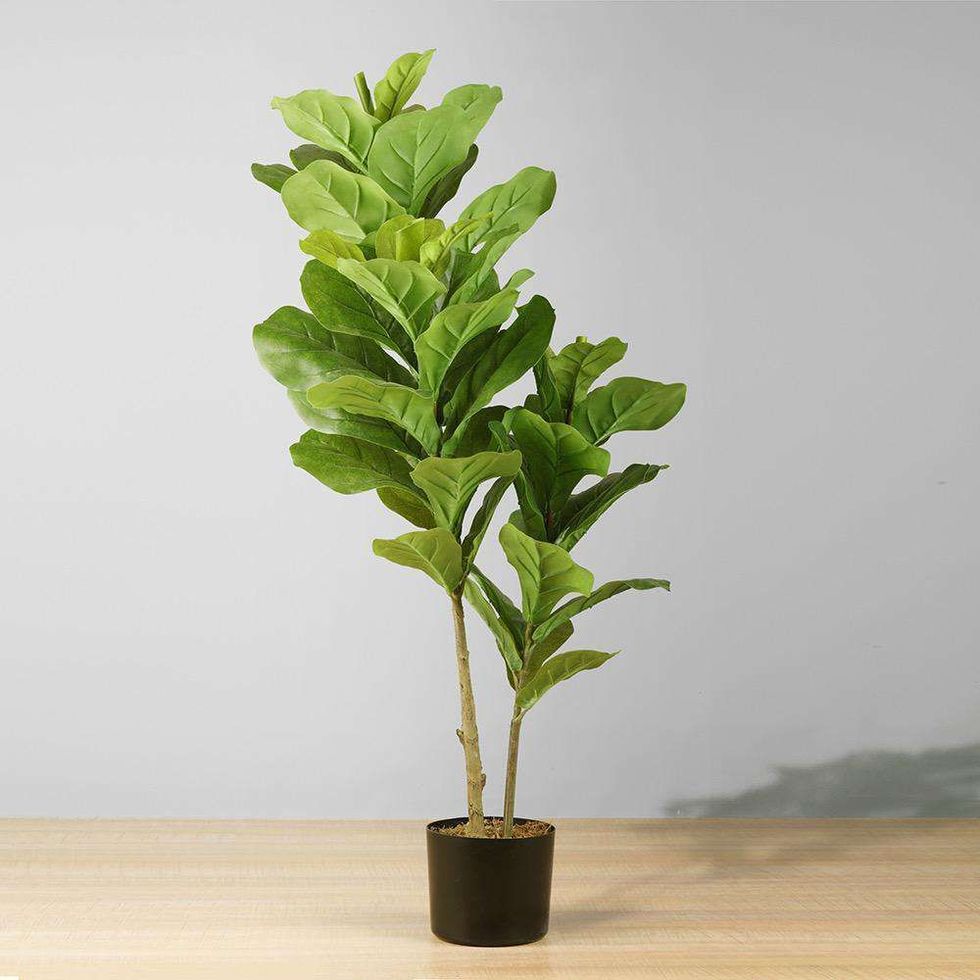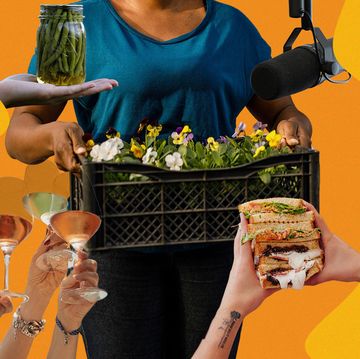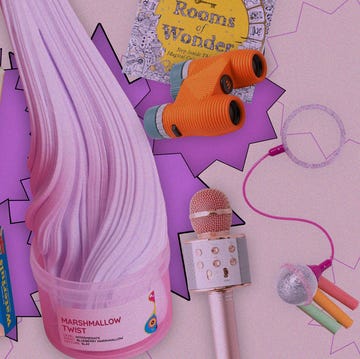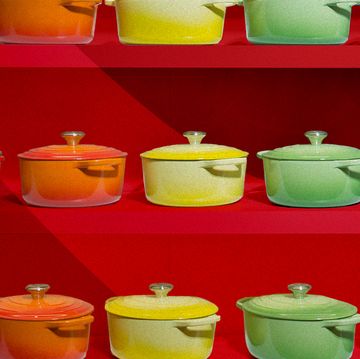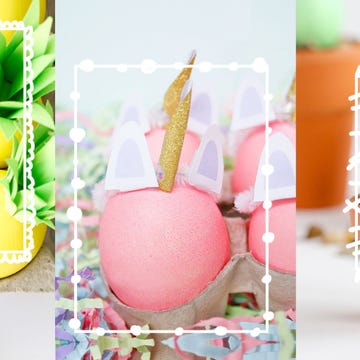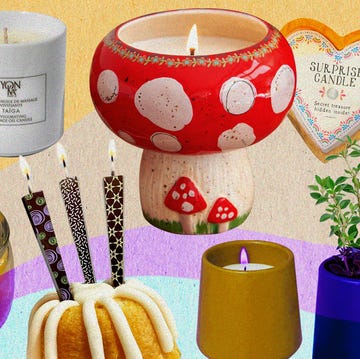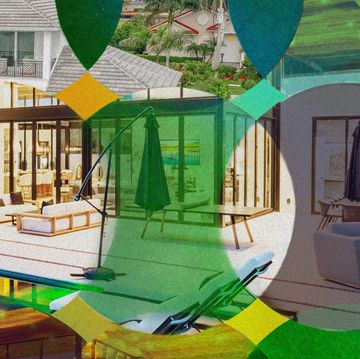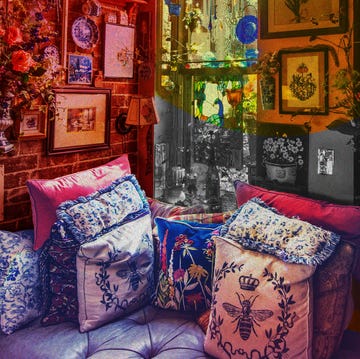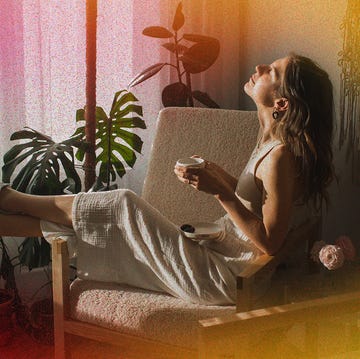We’ve all seen it. A garish geranium on a neighbor’s coffee table. That dusty ivy on a family member’s piano. Or a lopsided palm in a doctor’s waiting room. Everyone has encountered a phony plant, and probably none of them thought, “Wow! Those fake pansies in a mug look fabulous. Nice job!” Nope. We likely roll our eyes and say to ourselves, “Ugh. Tacky!”
That’s what I used to believe too until I was in a hotel in California a few years ago. I saw a lush Chinese evergreen by an elevator. Its leaves felt thin; the stems were smooth. The variegation pattern was complex. As a professional gardener, I couldn’t believe the staff had grown it so beautifully in a spot with zero sunlight. Then, I noticed the dull painted soil. That healthy specimen wasn’t healthy at all. It wasn’t even real.
Bumping into this sophisticated impostor led me down a strange path. I soon found myself searching for high-quality fake plants whenever I shopped in home stores. I’d inspect leaves to see how finely cut they were, assess colors, and test whether I could see the polyester pattern a few feet away. If it didn’t pass my test, I deemed it bogus and skipped it. The more realistic faux plants, I brought home.
For months, I felt embarrassed. A contractor made light of the look-alike fern on my dining table. A friend smirked when she saw the phony philodendron on my bathroom shelf. I didn’t care, and I couldn’t stop. The nooks, corners, and interior walls of my house that were formerly dark and sad now made me happy. Those little dabs of greenery soothed my soul in a way that a candle or vase could not.
Eventually, I figured out why: Numerous studies show that looking at plants — even in peripheral vision — reduces stress. Without realizing it, I was on a self-care mission. Like any human being, I had a natural physiological inclination to relax, so I let go of my embarrassment and fully embraced decorating with artificial plants.
Because of my new philosophy on forged foliage, I’ve realized plants that are low maintenance in real life aren’t as worth displaying as those that need special conditions. For instance, a snake plant or cactus grows slowly with scant care, so it’s more convenient to display artificial versions of plants that grow quickly and require a ton of trimming.
When choosing a fake plant, it’s important to consider its shape. In design, a vertical focal point serves a space well. While bushy plants soften and all panels add texture, a tall plant creates drama. It contrasts with the low planes of tables and flooring.
Sometimes, a fake plant can look tacky because of tall, exposed branches. For instance, a dracaena’s trunks will oftentimes shine brighter than a waxed car. Same goes for ficus, olive, and eucalyptus. However, there are many foolproof options. Here are some fake — excusez-moi — faux plants that I really love.
Faux pothos are ubiquitous, so finding a decent one at a home décor store is easy and inexpensive. Because their heart-shaped leaves form lush mounds, they nicely soften the straight lines of furniture. Use a small potted one as a bookend on a shelf, and your eyes will instantly earn pleasurable break. Place atop a console table amidst favorite knickknacks for a green sculpture of interest. Or set in that sterile corner where the kitchen counter meets a wall. Its linear intersection will become welcoming and warm.
Most of us don’t have the tall trees that monsteras like to ramble up in our living rooms, so keeping a faux one makes sense. Also called a Swiss cheese plant, they boast unusually huge, deeply perforated leaves, which may be why they’ve recently become social media stars. Make a bold tropical statement by setting a monstera in a blank corner so the dark, glossy leaves contrast crisply with light walls. Or you could pair it with décor from its native Central America.
I find the top of a bookcase pretty bleak. It’s a straight edge that mimics the edge of a ceiling. Some folks are into that sparse look, but I think this a prime space for greenery-scaping, especially if you’re a reader and have multiple bookcases that create scads of hard lines with horizontal shelves and vertical book spines. If you place trailing succulents, a string of hearts, or good ol’ ivy up top, you’re creating a broad focal point that mellows out the harsh lines.
Though growing plants on a wall was all the rage in the 2010s, many gardeners came to realize maintaining a vertical garden was difficult. Watering panels can be a tricky, time-consuming chore, and plants develop awkwardly because they like growing toward the sun rather than outward. In homes, plant panels can be a stylish piece of natural wall art whose green helps disperse the day’s stress. This option from Ikea is modestly sized at 10-inches-by-10 inches but also enticingly priced. Buy a few, and cluster them for a hip piece of rectangular art above your couch. Or stack several for an inviting vertical column beside a front door.
Though some websites claim growing a staghorn fern is easy, experienced gardeners know it’s actually not. Native to rainforests in Australia, these epiphytes get most of their moisture from the air. Therefore, they require high humidity and warmth, much more than the usual homeowner is able to provide. Plus, they like lots of indirect light and super-loamy soil. If all that seems like too much to keep this attractive fern alive, it is. What’s neat about staghorn ferns is they resemble deer antlers, which is why they enchant longtime gardeners. Instead of paying for the real, fussy thing, hang this wannabe above your fireplace.
The fiddle-leaf fig is a popular plant choice. This rainforest native sports hefty, scalloped leaves that often hide its trunk. In real life, a fig demands lots of warmth, indirect light, and just-right watering. More than once, I’ve run into folks who’ve dumped theirs in the compost bin after losing the battle to keep it happy indoors. A faux alternative is an ideal solution. No high maintenance and instant interest.
Faux grass functions nicely as a light vertical accent. With stark lines and uniformly green color, it matches well with sparse, contemporary décor. And against the visual heaviness of a sectional, side table, or fireplace, it draws the eye up and adds height. You can also add verticality by setting a clump of real dried grass or branches in a narrow vase. Pick these up from any craft supply store, or grow your own if you have an outdoor space. However used, tall grasses evoke wispy, expansive meadows and calm the spirit.
Karen Hugg is the author of Leaf Your Troubles Behind: How to Destress and Grow Happiness Through Plants and has contributed to Thrive Global, Wired, and Garden Center Magazine.
Get Shondaland directly in your inbox: SUBSCRIBE TODAY


